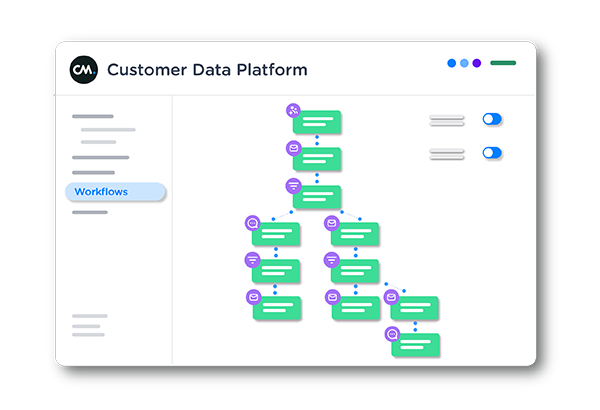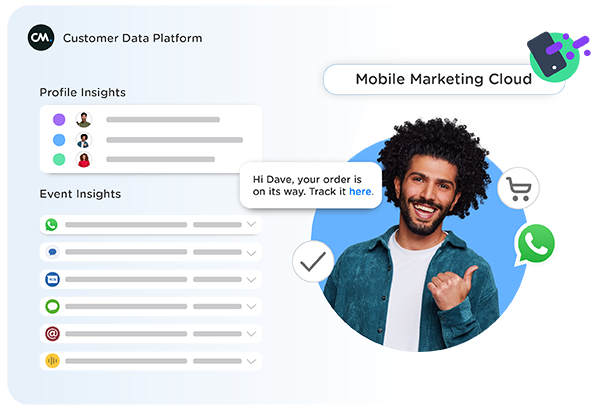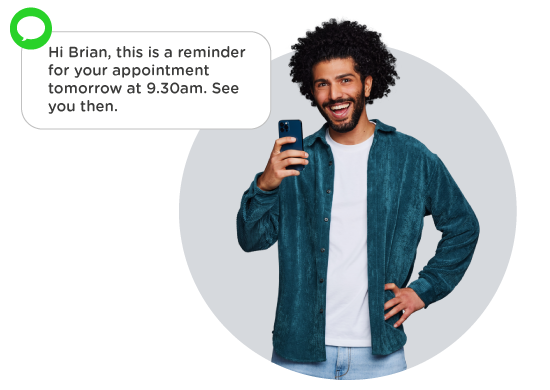- Top 5 Ways To Introduce Personalized Experiences
- 1. Access All Patient/Customer Data
- 2. Unify Data
- 3. Scale Personalization
- 4. Adopt the Customer’s Cadence
- 5. Provide the Best Experience
- Influence of Personalized Experiences
- Conclusion
Disruption in the healthcare industry will come quickly and in many forms. Consumers and providers are already accepting value-based care as a replacement for the fee-for-service model and that’s just the beginning. With growing customer expectations, coupled with innovations in communication channels and delivery models, it is evident that healthcare players need to make substantial changes while delivering experiences. Patients don’t want to be treated as numbers. They crave healthcare services that are specifically curated around their needs and preferences.
With technological innovation and automated personal interaction, offering personalization in healthcare has never been easier. One such example is Doctor on Demand, a platform that enables patients to leverage personalized virtual doctor visits to get their symptoms checked, for health condition diagnosis and to get prescriptions. Patients can access personalised healthcare right from the convenience of staying at home.
Great customer experience can restrict consumers from easily switching their health plans, resulting in $4 million dollars of savings in the total revenue for the healthcare insurance firms. So, how to personalize your healthcare member experience? Let’s find out:
Top 5 Ways To Introduce Personalized Experiences
The way healthcare players market to broad groups and individual consumers is and should be very different. Each consumer has their own communication preferences, with particular behaviours and attitudes that are specific to them. It is important for healthcare players to fully understand these five requirements in order to create an effective personalized experience.
1. Access All Patient/Customer Data
To provide a personalized experience, it is essential for healthcare companies to have a deep understanding of their patients. To have this understanding, it's essential for healthcare companies to have access to unified patient data from across the organization into a single customer view. A survey states that 55 % of marketers in healthcare are working with systems to enhance marketing’s view of the customer to add data from each impact and interaction point along the customer journey. While doing this, it's important to identify who owns the data they plan to use, and how they can make the best use of it with consumer consent.

Ultimately, data-driven approaches for healthcare personalization are crucial for healthcare companies. One great example of how healthcare companies can leverage data is Orlando Health which leverages patient data to deliver personalized healthcare services to new mothers. The doubt resolution process is made easy for new moms by having their individual queries answered right in their inboxes.
2. Unify Data
Technology silos result in an interrupted consumer experience. With nearly $18 billion invested in healthcare technology ventures over the last six years, the digital health network is highly fragmented. A unified solution that integrates all internal technologies, like a customer data platform, can counteract this friction. Having a flexible approach to technology integration will also futureproof the organization and allow them to adopt new technology moving forward as they take steps to innovate their consumer experience.
3. Scale Personalization
Once all the member data is unified into a single customer view, the next step is to determine how to personalize experiences at scale. This issue exists evenly across the healthcare industry, with only 7 % of marketers utilising the in-line analytics essential for real-time decision making in order to deliver individualised experiences. Without personalizing the patient experience at a high scale through data-driven approaches, healthcare companies will be ill-prepared to survive the disruption.

4. Adopt the Customer’s Cadence
Consumer journeys are no longer linear and are rather dynamic and multi-staged, healthcare companies must be prepared to engage with their patients on multiple online and offline channels/touchpoints in real-time while understanding the consumer’s context. Today's consumers live in the era of superior experiences and have escalated expectations driven by Netflix, Amazon, etc. and therefore, they expect their healthcare partners to deliver the same highly personalized and relevant messaging through the channel they prefer.
5. Provide the Best Experience
The modern consumer demands clear and immediate value and healthcare organizations need to understand that is the need of the hour in the industry today. Disruptors that emphasize engagement, like leading brands, can overtake incumbents that have a lot of friction in their experience driven by silos of data, technology and services. The average customer does not care if personalization is difficult for an enterprise to deliver, they will migrate to those who deliver a superior experience. To thrive, healthcare enterprises need to deliver a member experience that is on par with leading retailers.

The road to long-term growth can be built by achieving these imperatives. In fact, recent research found that personalization can lead to a revenue shift of $800 billion in the coming five years in industries like retail, healthcare, and financial services but only those with hyper-personalized consumer experience will be able to capture a part of this revenue.
Influence of Personalized Experiences
Data fragmentation across systems and internal processes is one major challenge for healthcare players today. The disconnected technology infrastructure is led by multiple channels while service lines and business functions are based on department-specific needs and have caused fiction in the member experiences. For example, a patient might engage with different departments, through different channels, and have a varied and disconnected experience that ultimately causes frustration.
By adopting new processes and using innovative technology, healthcare companies can solve the problem of disconnected experiences and drive substantial benefits. Those who personalise the member experience could also see five times higher retention rates. This can be transformative for any healthcare player and lead to breakthrough results.
The expectations consumers have of healthcare organizations are ever increasing; personalized experiences and access to the information they need when they need it have become the norm. The ultimate aspiration, however, is a closed-loop virtuous cycle where members engage with players, who in turn use those engagements to further personalize the member experience. The healthcare players that will be best positioned to endure the transformation happening in the industry, both now and in the future, will be the ones who are constantly looking ahead and evolving their member experience accordingly.
Conclusion
Creating a personalized experience can be challenging without an effective healthcare customer service solution in place. By working with a best-in-class communications platform like CM.com, you can uncover patient needs and pinpoint care quality improvement opportunities to deliver patient-centric care with ease! To know more, click here.
